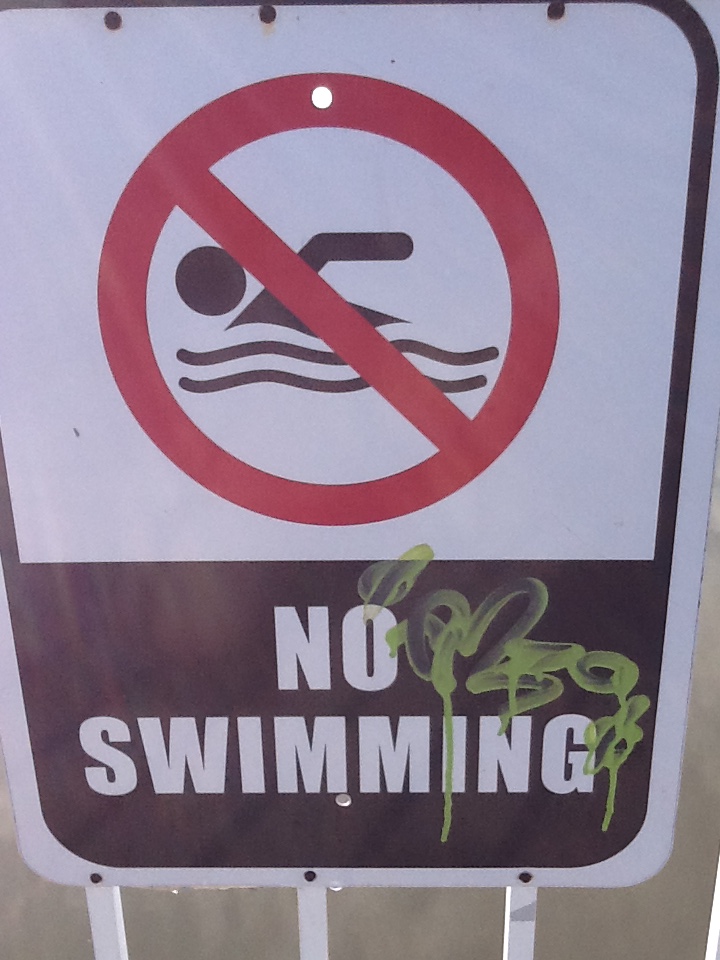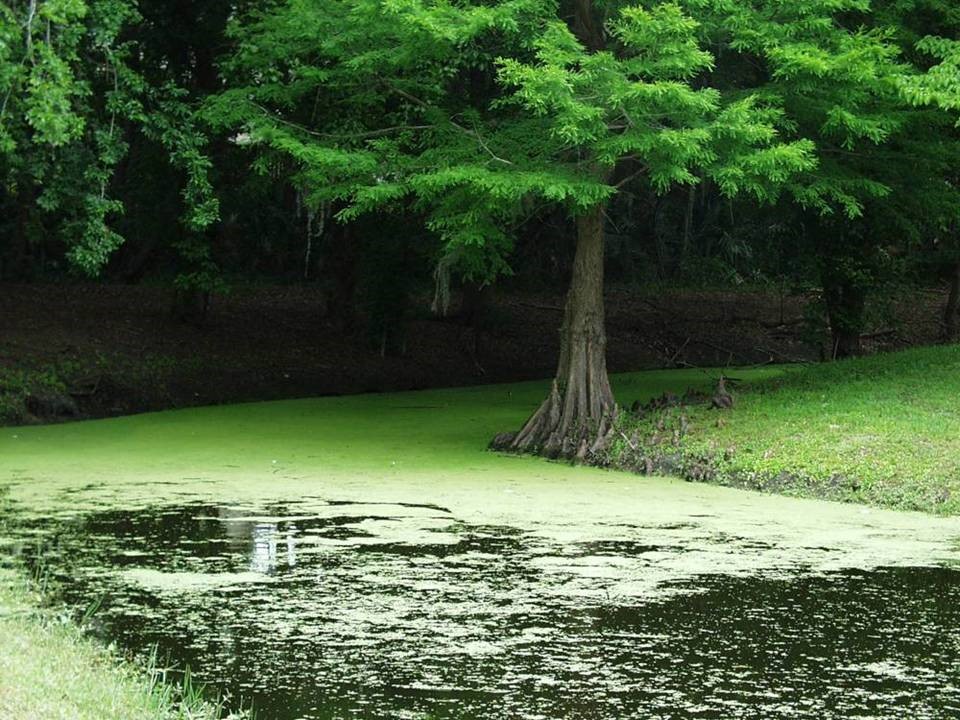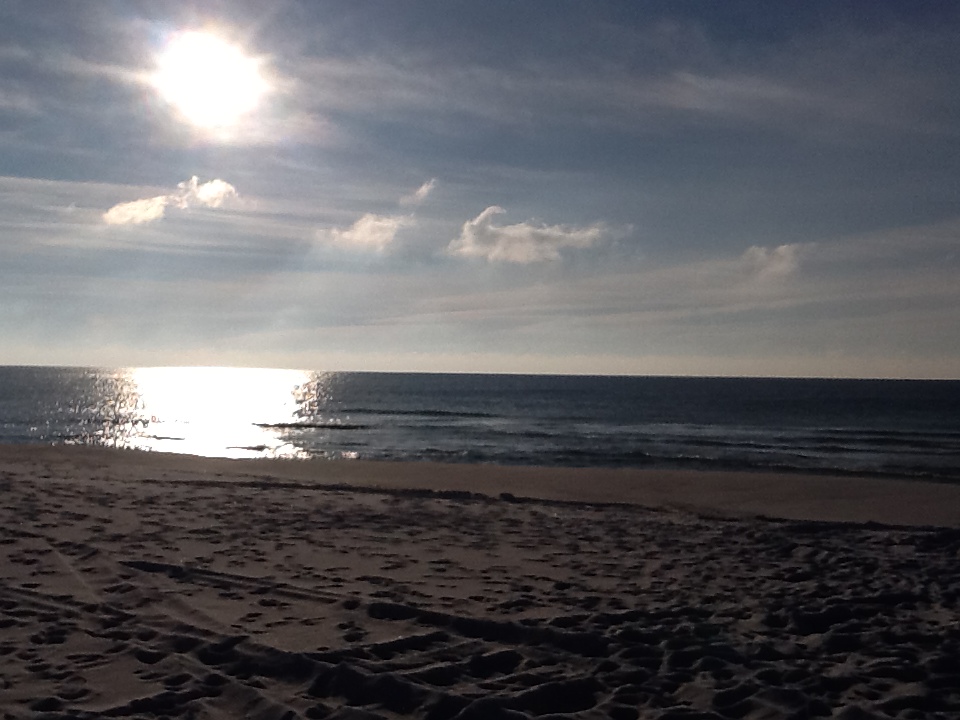Based on an annual evaluation recent competed, and feedback from my advisory committee, water quality issues are the number one natural resource concern for those who follow my extension programs. It makes sense. Poor water quality can negatively impact businesses who depend on clean water, waterfront property values, tourism, and the untold numbers of Florida panhandle residents who recreate in our estuaries and bays. The water quality issues I provided education on in 2023 are focused on the Pensacola Bay system, but these issues are probably similar across the Florida panhandle. Those issues include excessive nutrients, fecal bacteria (and other microbes), and salinity. We also wrote one article on the increasing water temperatures occurring in the summer.
Let’s begin with the fecal bacteria issue. In the Pensacola Bay area, it may be our number one concern. The Florida Department of Health posts local health advisories each week and some bodies of water are issued advisories for over 30% of the samples that are taken. Frequently Bayou Chico (in Pensacola Bay) is issued an advisory over 50% of the samples taken. However, in 2023 (in the Pensacola area) the number of advisories never exceeded 30% for any body of water. Seven of the 13 swimming beaches monitored did not post an advisory at all. This is one of the best years we have had since I began monitoring them.

In 2023 eight of the 13 water quality articles I wrote were on this subject. Three additional articles were posted by other extension agents on our panhandle e-newsletter team. But my annual follow up survey showed very few adopted best management practices (BMPs) they could adopt to help reduce fecal bacteria in area waterways. The reduction was more likely due to the effort by our local city and county to improve sewage infrastructure and the fact that we were in a drought for much of the year – there is a positive correlation between rainfall and the number of advisories issued for local waterways. Despite the fact that few readers adopted BMPs this year, and advisories declined – at least in Pensacola – we still believe adopting these practices would help reduce this issue. We will be developing a fact sheet in 2024 to help homeowners better understand these practices and help reduce health advisories.
Another local water quality issue that is high on everyone’s mind is excessive nutrients. This is actually one of the largest concerns nationwide. Excessive nutrients can lead to algal blooms, which can lead to harmful algal blooms or low dissolved oxygen, which can lead to fish kills. In the Pensacola Bay area large fish kills have not occurred in decades, but nutrient monitoring continues. The UF IFAS Lakewatch program trains local volunteers how to collect water samples and measure water clarity. The samples are analyzed in the Lakewatch lab on campus in Gainesville and the results sent back to the community. In the Pensacola Bay area, we are currently monitoring six bodies of water (three stations in each). Nutrients values are stable, or improving, in four of the six locations. They are slightly elevated in Bayou Chico and one station in Bayou Texar is quite high in total nitrogen. Despite the values at those stations, no algal blooms or fish kills occurred in either Bayou Chico or Bayou Texar (or anywhere else in the Pensacola Bay area) in 2023. There are numerous sources for nutrients in local waterways and many behavior practices businesses and residents can adopt to help reduce nutrient pollution. In 2023 I wrote only one article on this topic but plan to provide more education in 2024.

A third topic that caught attention this year was the warm water that occurred this past summer. Extreme water temperatures can decrease dissolved oxygen below levels where most estuarine creatures can survive. Many creatures have a thermal tolerance that could have been exceeded this year. Industries like oyster farming are negatively impacted. Many varieties of harmful algae thrive in warm conditions. My extension program does not conduct any citizen science project that monitors water temperatures within the bay. Working with our local oyster farmers, the local estuary program is beginning to monitor such, and more folks are taking notice of the issue. Extension agents posted four articles on the subject this year. Whether the summers of high-water temperatures will become more common is unknown. The first thought on cause is climate, and management practices on how to reduce climate change are well documented. It is also understood that adopting such practices will not reduce intense warm summers immediately but should still be adopted for the long term. It is also possible that the current extreme heat summers are cyclic, and things will cool down (relatively) in coming seasons. 2023 was an El Nino year. Monitoring and time will tell how this issue will play out. That said, it would be smart to consider behavior changing practices for the future. Extension will post more information on this topic in 2024.

One issue of concern personally was the impact of increased rain on the salinity of our bay. There has been a noticeable (and measured) increase in rainfall in recent years. For Pensacola, we historically received about 60 inches of rain each year – one of the wetter locations in the southeast. But over the last decade this has increased to 70 inches per year. Along with the increase in rainfall, there has been a noticeable increase in development. This increase in development reduces the surface area of land that would naturally absorb this rainwater and recharge the much-needed aquifer. Instead, this rainwater is diverted from the new developments to stormwater management projects – some that work well, others that do not. The question I have on the table is whether this increase in stormwater run-off is decreasing the salinity of area waterways? And, if so, is it to a level where local marine species (and those we are trying to restore) will be negatively affected? To answer this question, I have trained volunteers to monitor salinity at locations around the bay area. They are monitoring once a week, at the surface, near the shoreline. Though the sampling location is not ideal, it is what our volunteers are able to do. I had determined that the data would be collected until each volunteer reached 100 readings (about two years). As of the end of 2023, five of the 13 monitoring locations (38%) have reached that 100-reading mark. We know that the turtle grass and bay scallops, both species we would like to see increase in our bay, require salinity be at (or above) 20 parts per thousand. Though there are many more weeks of monitoring needed to reach our mark, current data suggests that salinities have not altered from data posted decades ago and are high enough for these species to return in areas where they historically existed.
I will finish this review with a comment that articles were posted in 2023 on issues I am not directly involved with, but know they are a concern in many areas of the panhandle. Private drinking wells being one. There were several articles posted by Dr. Andrea Albertin addressing this issue in 2023 and for those interested in this topic I recommend they read these, and/or reach out to her directly (albertin@ufl.edu.). There was also an article that focused on water quality improvement BMPs in general posted by Khadejah Scott (Wakulla County) that may be of interest. https://nwdistrict.ifas.ufl.edu/nat/2023/10/05/simple-steps-to-improve-local-water-quality/.
With this being a large issue with many in the Florida panhandle, extension will continue to publish articles and have programs on this topic. Reach out to your local county extension office for more information.
- St. Joe Red Tide Claiming Terrapins - December 15, 2025
- The 2025 Snake Watch Report for the Pensacola Bay Area - December 15, 2025
- Rattlesnakes on Our Barrier Islands; Part 2 – Prey Selection - December 15, 2025
